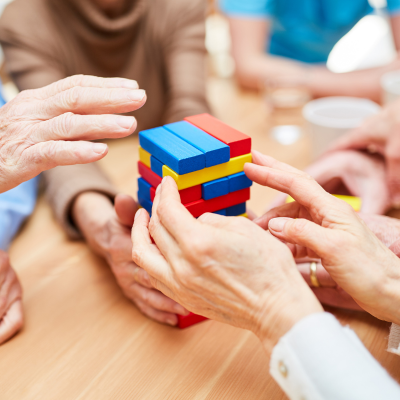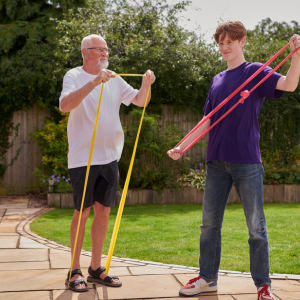Get exclusive deals you won't find anywhere else straight to your inbox.

Improving Dexterity And Fine Motor Skills In Care Home Settings
Improving dexterity and fine motor skills in care home settings is essential for enhancing the quality of life and independence of residents. Especially for those who may have physical limitations or cognitive impairments. Here are some strategies and activities to help residents improve their dexterity and fine motor skills.
 Exercise Programs
Exercise Programs
Implement regular exercise programs tailored to the residents' abilities and needs. Activities like stretching, gentle yoga, and chair exercises can help improve overall strength and coordination. Resistance bands are an ideal, cost effective tool for strengthening. Use smaller sized bands to build hand strength and dexterity. You can also tie the bands between the legs of a chair for lower leg exercises. Small, portable items such as stress balls are great cost-effective resources. Squeeze to relieve stress and tension while building hand strength. For more exercise activities why not try therapy balls. Anti-burst therapy balls can be used for a range of exercises including gross motor development, increasing core strength and improved muscle tone.
Fine Motor Exercises
Improving fine motor skills in the elderly can significantly enhance their quality of life and independence. Fine motor skills involve precise movements of the hands, fingers, and wrists, which are essential for everyday activities like dressing, cooking, and writing. Provide residents with activities that target fine motor skills, such as threading beads, sorting buttons, or completing jigsaw puzzles with large, easy-to-grasp pieces. These activities are great for improving dexterity and can be enjoyed as a group, improving engagement and social interaction. Playing card games, board games, or dominoes can also be great for improving dexterity as they involve fine motor skills such as shuffling cards, moving game pieces, and handling small objects.
 Strengthening Exercises
Strengthening Exercises
Simple hand and finger exercises can play an important role in the development of hand strength. Provide residents with therapeutic putty or clay that can be squeezed, rolled, and molded to strengthen hand muscles. You could even introduce rubber bands or stress balls, or simple finger tapping exercises on a table or counter to improve dexterity and coordination.
Writing and Drawing
Encourage residents to practice writing, drawing, or colouring regularly. These activities require fine motor control and help maintain hand-eye coordination, plus the encourage social interaction. Use larger, easy to grip writing tools such as pencil grips which are suitable for the right and left hand, and can be used on pens, pencils and paintbrushes. Offer adaptive tools and devices designed for individuals with limited dexterity. Resources such as self-opening scissors or an essential scissors kit are great for individuals with poor hand control, tremors or a weak grip.
 Weighted Therapy
Weighted Therapy
The use of weighted therapy has many benefits, most commonly known for it's calming and relaxing purposes. Incorporating weighted products such as weighed lap pads, weighted shoulder or neck wraps, weighted blankets or weighted lap animals can help residents calm and focus on set tasks. Try using a weighted lap pad or shoulder wrap whilst sat at table enjoying threading, writing or other fine motor activities. If residents become frustrated at not being able to do some of the activities as well as they used to, weighted blankets can be used to lay over a lap or use on top of a bed to help calm, relax and reduce tension.
Massage Therapy
Engaging in gentle hand massages can help improve blood circulation and reduce hand stiffness, which can be beneficial for fine motor skills. Self massage tools kits contain a variety of different massage balls and rollers which can ease away tension and release muscles in the hands, arms and other areas of the body. Small spiky massage rollers help promote tactile awareness. The conical spikes stimulate sensory receptors and blood circulation, especially effective on hands and feet during sensory integration therapy.
Sensory Mood Lights
Creating a calming and relaxed environment for any focused activities can greatly improve results. Try introducing sensory mood lights and bubble tubes. Bubble tubes provide multi-sensory stimulation. The combination of visual effects (bubbles and colours), auditory effects (gentle humming of the pump), and tactile sensations (vibrations from the rising bubbles) engage various senses. The gentle movement of the bubbles coupled with calming colour changing effects helps improve coordination and focus on any activities, giving residents a multi-sensory experience whilst practising fine motor skills.
Conclusion
As this blog discusses, improving dexterity and fine motor skills in care home settings can be fun and engaging. Remember that progress may vary from person to person. It's crucial to adapt activities to the individual's capabilities to provide ongoing support and encouragement. Additionally, involving family members and caregivers in these activities can enhance residents' social engagement and motivation.

